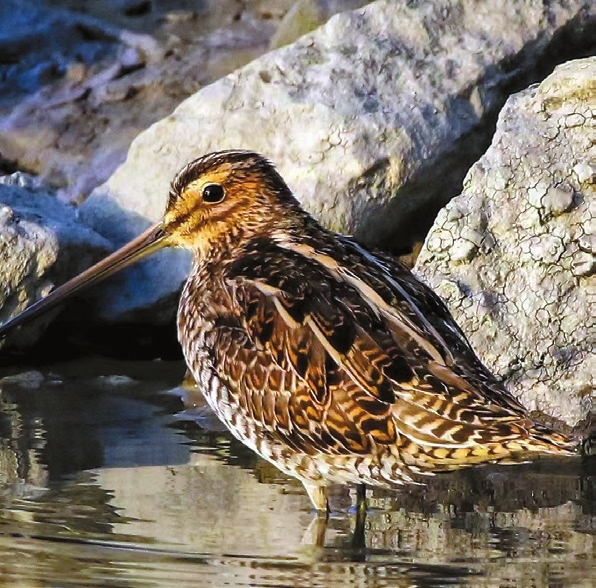
ONE of the most elusive visitors to Shenzhen during the migration period is the fascinating common snipe (Gallinago gallinago). The bird’s visitor numbers are sadly not as high as other species, making it even more difficult to observe them when they arrive. The common snipe is a 25-centimeter-long bird with an average 45-centimeter wingspan. It has striking patterns and a long beak. The animal’s belly is white but mottled, while the rest of the body is covered by streaks of light brown, dark brown, and white feathers. The crown is dark brown with a white line crossing the head from the bill, and the face is marked by a beautiful pattern of stripes that intercalate light and dark feathers. The wings are pointy and very visible when the bird is in flight. Its pointed tail wobbles while the bird forages for food. This unique migratory bird has a strong preference for marshes and wetlands, where they forage for insect larvae, spiders, mollusks and small crustaceans by sticking their long bills into the soft soil, following a fascinating and almost rhythmic pattern of movements. Their breeding season usually falls in the springtime when males arrive first during the migration period and wait for females. A female snipe lays up to four eggs per clutch over a nest she has alone constructed. She also takes sole responsibility for incubating the eggs for about three weeks. These birds are astonishing and a favorite among wildlife photographers and birdwatchers. Wouldn’t it be fantastic if their numbers were higher in our city? Let’s play our role in conserving more habitats where this and other migratory species can spend a few comfortable months during their long trips. | 
